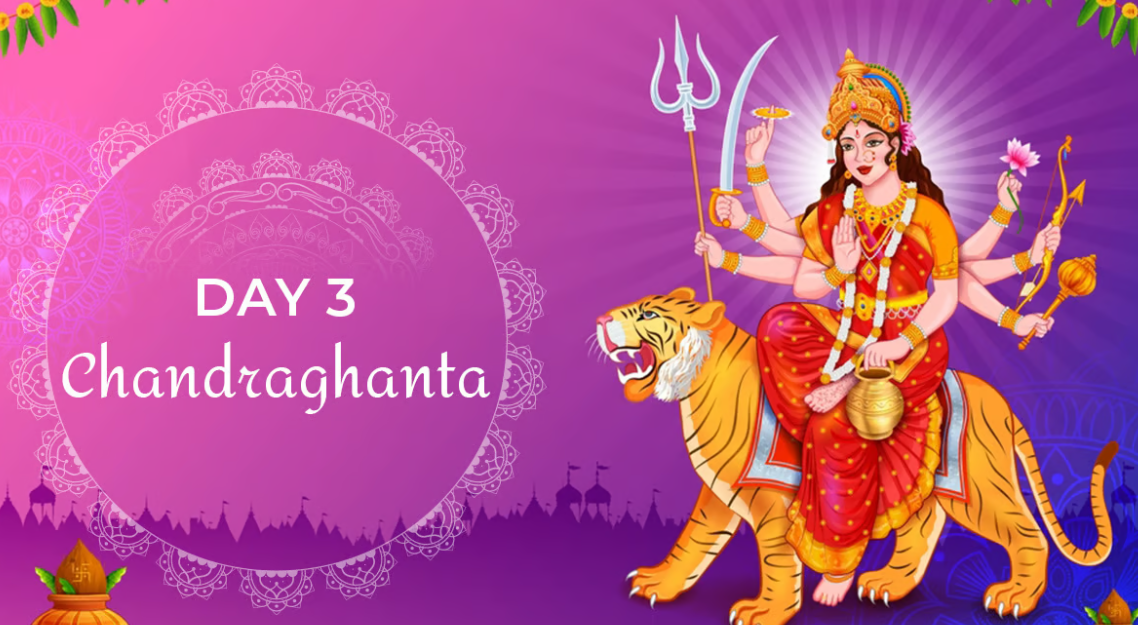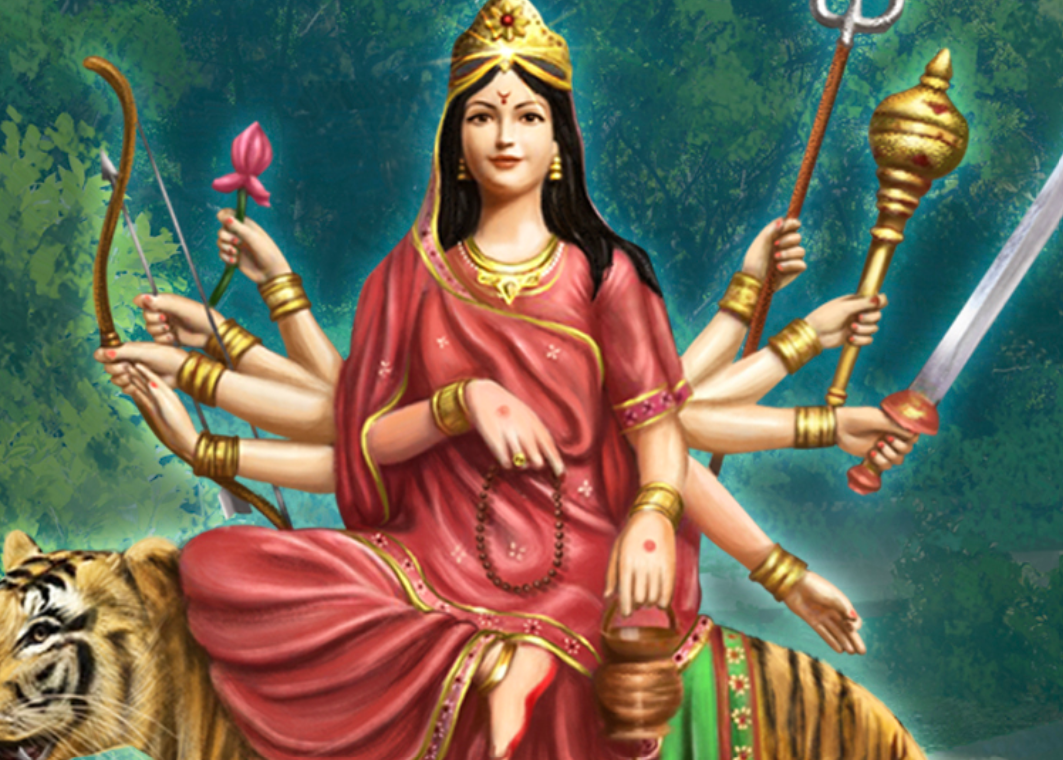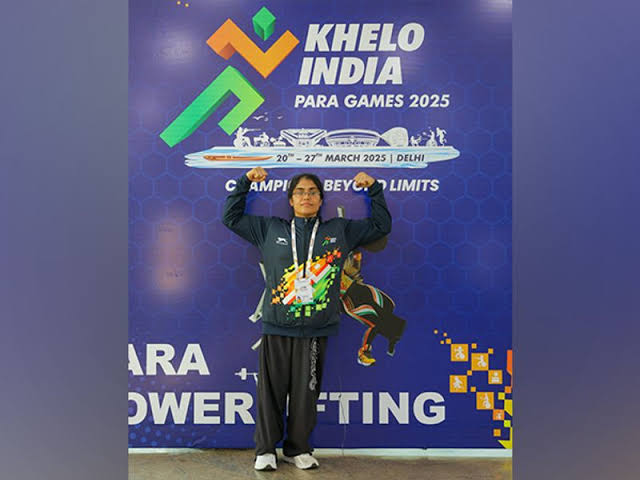On the third day of Shardiya Navratri, observed on October 5, devotees honor Maa Chandraghanta, the third manifestation of Goddess Durga. Each day of Navratri is dedicated to a different form of Adi Shakti, also known as Navdurgas, with Maa Chandraghanta embodying courage and serenity. She is depicted riding a fierce tigress, symbolizing strength, and is often shown with ten hands, each carrying different weapons such as a lotus, bow, trident, and arrow. One of her right hands displays the Abhaya Mudra, offering protection, while one of her left hands holds the Varada Mudra, symbolizing blessings.

The name Chandraghanta comes from the crescent moon (Chandra) adorning her forehead, which signifies her transformation from the peaceful Parvati to the fierce warrior goddess after her marriage to Lord Shiva. According to Hindu mythology, the sound from the moon-shaped bell on her forehead holds immense power, capable of driving away negative energies and evil spirits. In her battle against demons, the bell sound alone defeated many foes. Devotees who worship Maa Chandraghanta on this day are believed to receive strength, courage, and divine protection.
Devotees perform special rituals to honor her on the third day of Navratri. Many rise early and wear orange, a color associated with energy and enthusiasm. The idol of Maa Chandraghanta is placed on a puja chowki and bathed with sacred ingredients such as saffron, Ganga Jal, and Kewra. During the ritual, devotees offer yellow flowers, jasmine, panchamrit, mishri, and kheer bhog.
According to Drik Panchang, the auspicious timings for the puja on this day are:
Brahma Muhurat: 4:38 am to 5:27 am
Abhijit Muhurat: 11:46 am to 12:33 pm
Vijaya Muhurat: 2:07 pm to 2:55 pm
Chanting mantras like “Om Devi Chandraghantayai Namah” and other stutis helps devotees strengthen their connection with the goddess, invoking her blessings for wealth, fortune, and protection from harm.




